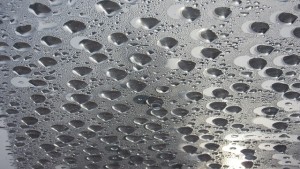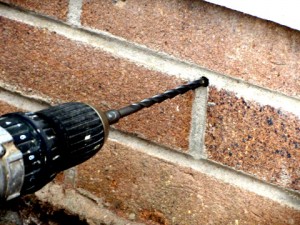A Damp proof course (DPC) is a barrier of impervious material built into a wall or pier to prevent moisture from moving to any part of the building.
The following are materials generally used for damp proofing structures:
1) Flexible Materials:
The materials, which do not crack and deform their shape when subjected to loading, are called Flexible Materials
a) Bitumen Mastic (Mastic Asphalt)
- It consists of asphalt or bitumen mixed with fine sand in hot state to form an impervious mass.
- Due to this consistency it can be spread (when hot) to a depth of 2.5cm (0.98″) to 5cm (1.97″), which sets on cooling.
- It provides good impervious layer but special care is needed in its laying.
b) Bitumen Felts (Sheets):
- It consists of 6mm thick sheet of bitumen prepared in rolls having width equal to that of brick wall.
c) Hot laid Bitumen:
This material is used on a bedding of cement concrete or mortar.
- This should be applied in two layers at the rate of 1.75kg/m2 (41.53lb/ft2) of the area.
d) Metal Sheets:
- Metal sheets of Copper, Aluminum, or Lead are used to prevent dampness, but they are costly.
- Sheets of these materials are used throughout the thickness of the wall.
- The sheets of Lead are laid over Lime Mortar and not with Cement.
- Mortar due to the chemical reaction of Cement over the Lead.
- The sheets of metal should be coated with asphalt.
- The thickness of the sheets should not be less than 3mm.
2) Rigid Materials:
- The materials, which do not resist transverse stresses and cracks when subjected to sever loading, are known as Rigid Materials.
a) Rich Concrete
- 1.2cm (0.47″) to 4cm (1.57″) thick layer of “Rich Concrete” (1:2:4) painted with two coats of hot bitumen is used as horizontal D.P.C.
- It also prevents the moisture penetration by capillary action.
- These layers are laid where the damp is not excessive.
b) Mortar:
- 2cm (0.79″) thick layer of “Rich Cement” and “Sand Mortar” (1:3) is applied on the inner face of external wall.
- This is a vertical D.P.C.
- The surface is than painted with two coats of hot bitumen.
c) Bricks:
- Over burnt or dense bricks in one or two layers can be used as cheap and effective Damp Proof Course.
- They are laid in “Rich Cement” and “Sand Mortar” (1:3).
- Bricks are rarely used as DPC except in cheap houses.
d) Stones or Slates:
- Two layers of stone slabs or slates laid in Lime, Cement and Sand Mortar (1:1:6) make a good DPC.
- They can also be laid in “Cement Sand Mortar.”
- It is used where a good quality of stone is easily and cheaply available.

